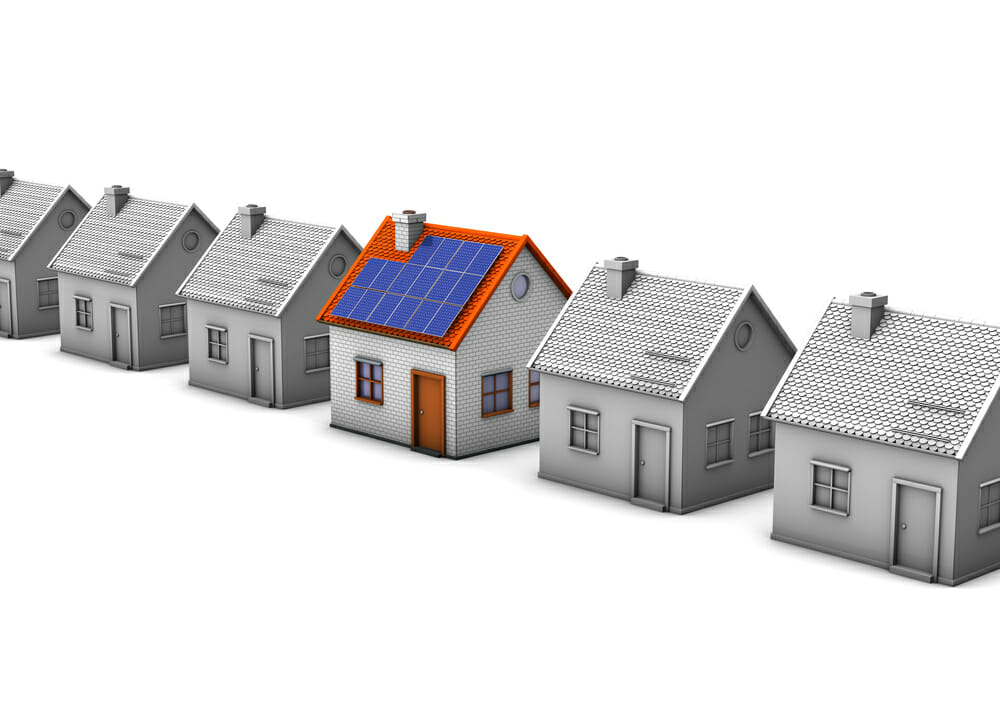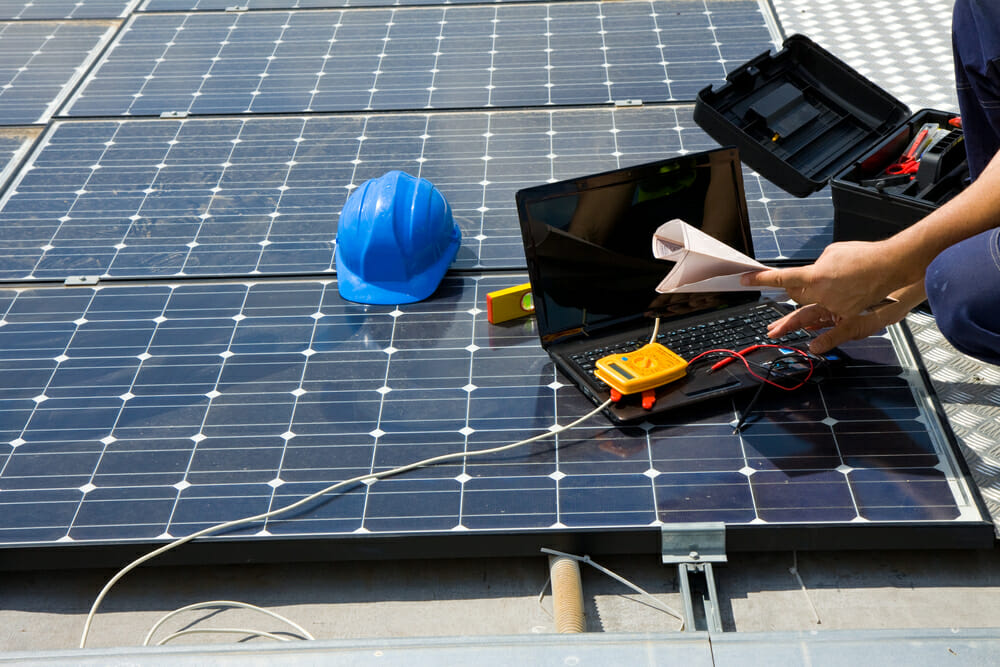Solar Inverters

So, like us, you find solar panel technology fascinating—but you still have some questions about how it all works exactly. After all, once the sunlight is absorbed, how does it actuallyconvert to electricity?
It’s pretty simple, actually.
Solar panels produce vast amounts of electricity—but none of it would be very useful to the average American without the help of solar inverters. Solar inverters convert the power so that it’s usable by most appliances and equipment throughout the home. Since AC electricity is the main way that power is transferred around the world, inverters are highly important to most solar power setups. If you’re considering solar power, you should know how these inverters work, the different types sold today, and how to pick the right ones for your needs.
What are Solar Inverters?
Solar inverters are conversion devices—they make the power produced by your solar panels usable throughout the rest of your home. Solar panels produce DC, or direct current power. This is good for things like LED lights, motors, and other low-power devices. Unfortunately, most of the appliances and electronics used in a given home run off AC electricity—or alternating current. In order for all that power created by solar panels to be usable in most day-to-day activities, it has to be converted by an inverter first.
How Solar Inverters Work
Power Inversion
The very first thing that solar inverters do is invert the DC power so it functions as AC power. To do this, the device sends the power stream through a set of physical switches—usually MOSFET or IGBTs—and the power takes on the same alternating frequency as AC power used around the country. This isn’t the only thing that an inverter does, though.
Tracking Maximum Power
During operation, an inverter keeps track of the maximum power produced by the panels. This is to boost efficiency of the system, and that maximum is constantly changing thanks to varying temperature and sunlight conditions.
Grid Detection
An inverter also has sensors to detect when the power grid is attached to home’s power lines and when it is not. This is a safety mechanism to help protect the power company. When the power grid isn’t connected properly, the inverter won’t feed any power to the home in fear of throwing power at transformers and causing unsafe conditions for utility workers.
Monitoring Panel Conditions
Many inverters also serve as trackers for solar panels, and they keep track of the amount of power produced by the panels throughout the day. This can help owners figure out when one panel is underperforming so they can make the necessary corrections to it.
Choosing a Type
There are two different types of solar inverters—the string inverter and the micro-inverter. Each type has its advantages, but when you pick between one or the other you’re really choosing between cost and efficiency.
String Inverter
When using a string inverter to convert your solar panel power over to usable power for your home, only a single inverter is needed for a large cluster of panels. Many people will only get one or two inverters for their entire home or business when making use of this type of inverter. There are some benefits to the setup, but there are also some downsides as well.
The Benefits of String Inverters
The main benefit of a string inverter setup is that it’s the most cost-effective way to convert DC energy to AC energy. For instance, if you have 20 solar panels, you’ll likely only need 4 or 5 string inverters to get the job done. Compared to the 20 micro-inverters needed, it’s much more affordable. String inverters are also known for their reliability and will require less maintenance than micro-inverters because there are less of them to worry about overall.
The Downsides of String Inverters
There are plenty of downsides to string inverters though, and those downsides could be the deal breaker that keeps you from getting the technology. The first—and most prominent downside—is that the lowest producing panel in the string is equal to the amount of energy every panel will supply. That means if one of the panels is under shade, all of the other panels will produce as if they, too, are in shade as well. That’s why many homes that have shade issues—or a roof with multiple sections—don’t use string inverters. Even on a roof that’s flat and without any shade, there’s still going to be a lower efficiency level from the system than there would be with micro-inverters.
Another major downside of string inverters is that if one stops functioning properly, more power output will be lost than with micro-inverters. A single failure could stop your system from doing its job properly. This is an issue that you won’t have to worry about with a small inverter at each of the panels.
Micro-Inverter
A micro-inverter is a compact inverter that’s attached right to a single solar panel. Often the inverter is built into the panel, mounted somewhere on the mount system, or attached right to the back of the panel to do its job. There is a single inverter for every one of the different solar panels used in the array, allowing all the AC power to be produced right at each panel, and then pooled into one power line for distribution.
The Benefits of Micro-inverters
There are many benefits of micro-inverters, but we’ll start with the most dramatic one first. They offer improved power efficiency levels, and they also help a solar array produce more usable power than an array connected to string inverters—regardless of the roof shape and design or its location.
It’s also much easier to keep an eye on specific solar panels, since each one has its own inverter—this will allow you to see which panels are under-producing at a glance.
It also means that maintenance will be easier to take care of on a panel-by-panel basis.
Micro-inverters tend to be more reliable than string inverters as well. Not in the sense that they break down less often than string inverters, but that they affect the array of solar panels less. If one micro-inverter breaks, it only puts one panel out of commission. If a string inverter breaks, it can stop five or more panels from doing their job any longer.
Micro-inverters are much more effective when you have a roof that isn’t under optimal conditions. Whether you have shade from trees or a split roof that faces off in a few different directions or you simply don’t have much south-facing roofline available, a micro-inverter setup can help you avoid power bottlenecks and efficiency losses that you would suffer from with a string inverter.
The Downsides of Micro-Inverters
Micro-inverters aren’t all positives, though—there are a few negatives as well. The biggest drawback is the price difference between micro-inverters and string inverters—the former are significantly more expensive to purchase and put in place. They also require more maintenance in general than string inverters do because there are more of them in place.
Power Optimized String Inverter
While it’s not really another individual option, the power optimized string inverter setup is a real improvement over standard string inverters, and it helps create a more affordable solution than micro-inverters as well. Anyone interested in solar power should think of this option as the middle-man. Each of the solar panels comes with an energy optimizer that helps adjust the DC power from the panel without actually converting it.
A power optimizer splits up the solar panels more so they aren’t all connected in a series any longer. That means if one of them is affected by a shadow, all the other panels won’t have a reduced solar output because of that. The optimizers help boost efficiency of a string inverter setup, while being much more affordable than micro-inverters are.
Consider Efficiency
Converting from DC to AC current is always going to waste some power. That’s why most solar panel calculations figure that you’ll only be able to use around 85% of the power at the most. The amount of power that’s wasted during the conversion process depends on how efficient the inverter doing the converting is.
While it’s important to think about the different form factors of solar inverters and how they are designed for different purposes, you also have to look into the efficiency of the unit itself. You can have different efficiencies in a range of string inverters and micro-inverters. If you want the most power production from your panels, it makes sense to pay attention to how efficient each of the different inverters is in particular.
Getting the Right Size
Solar inverters are rated to handle different power loads, which means you need to choose an inverter to match your solar array. Consider the size of the solar array you’re planning on obtaining. Add up the total power that all the cells will produce at peak, and pick out an inverter that can handle that power without a problem.
When choosing an inverter, you have to consider the minimum number of watts it needs to function properly and the maximum. It’s important to get something with a bit of room at either side, and getting an inverter that can handle even more power is good if you think you might want to expand your array later on without having to invest in another inverter.
Solar inverters are key to a successful solar power system, but getting the right one isn’t as simple as just picking out the part and adding it to your home. You have to take time to find the perfect combination of affordability and utility—and that’s something that’s often best left to professionals.
https://modernize.com/solar/inverters




ليست هناك تعليقات:
إرسال تعليق